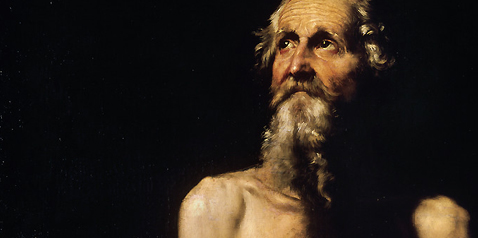
JUSEPE DE RIBERA
Born in Spain (Játiva/Valencia 1591 – 1652 Naples) and rarely forgetting to add the ‘country of origin’ in his signature in the form of ‘Español’ or ‘Hispanus’, Ribera went to Italy as an adolescent. It was probably in 1607 that he first arrived in Naples, but he also lived in Rome and Parma. Only from 1616 do we find him permanently in Naples, a city that belonged at the time to the Spanish Habsburgs and governed by Spanish viceroys. As one of the wealthiest and largest cities in Europe, it provided an exceptional working climate for artists.
Known in Italy as ‘Lo Spagnoletto’, he took an intense interest in Italian painting, and took as his model above all the œuvre of Caravaggio, who worked in Naples for a few months in 1606/07. A visit to Rome also familiarized him, however, with the work of Guido Reni, Annibale Carracci, and other Roman masters of the Italian Baroque. But Ribera’s penetrating ‘warts-and-all’ painting, which shows Christian themes in harsh , Caravaggesque illumination and with due pathos, gave rise to a new and unfamiliar stylistic note.


